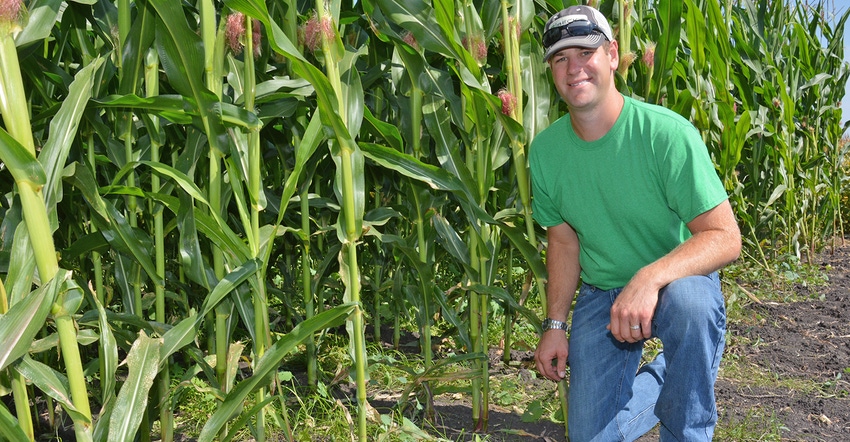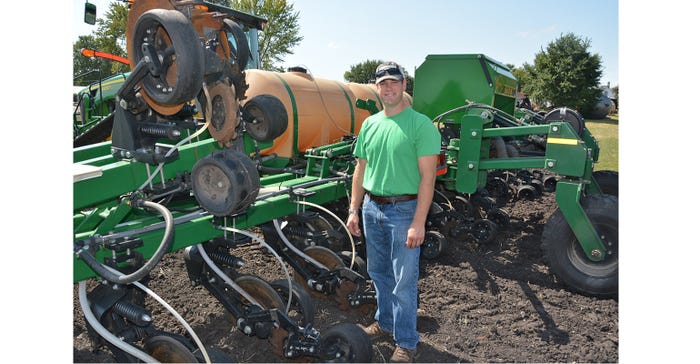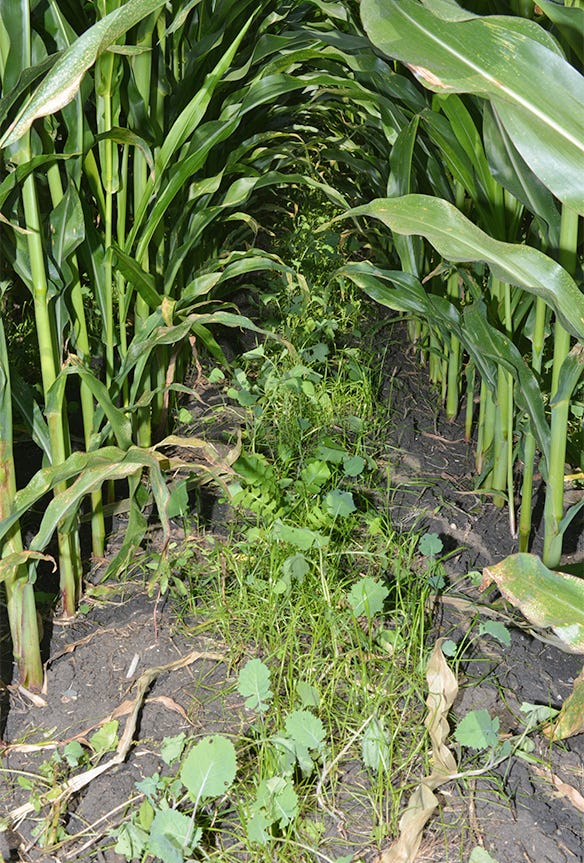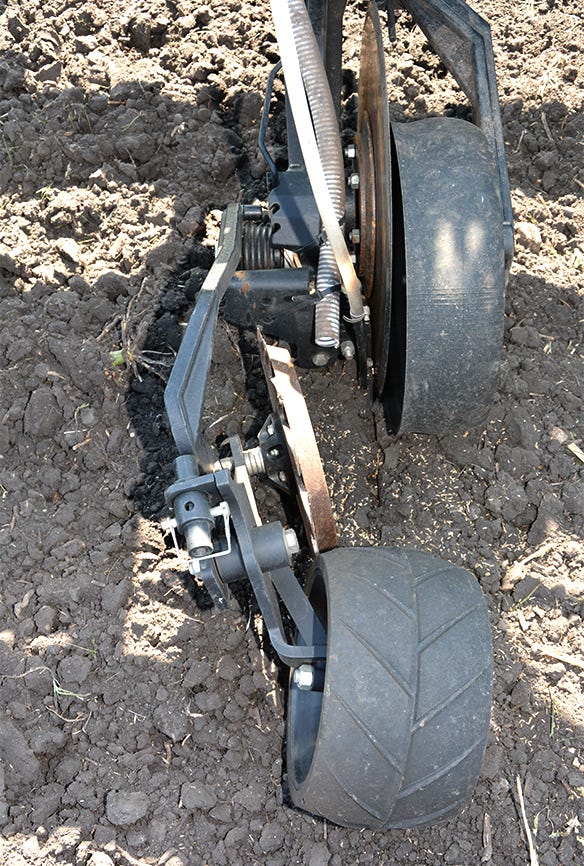
What started out as an on-farm research cover crops project three years ago has evolved into a side business for Keith Hartmann
The Gibbon, Minn., crop and organic finish-pastured hog farmer has fine-tuned his practice of applying nitrogen as a sidedress when he interseeds cover crops into corn. He built his own interseeder with grants awarded by federal, state and commodity programs. Those programs wrapped up after the 2018 harvest and concluded with Hartmann hosting a field day to share what he learned. Now, Hartmann also sells cover crop seed and serves as a consultant for other farmers interested in giving cover crops a go.

FARM-BUILT: To sidedress N while seeding cover crops, Keith Hartmann attached a Yetter Magnum 10,000 to a Gandy Orbit airseeder. This was his second modification to his equipment.

Hartmann received grants for his on-farm research — a three-year Sustainable Ag Development grant and a Nutrient Management Initiative grant from the Minnesota Department of Agriculture, and three annual Conservation Innovation grants from the Minnesota Corn Growers Association. He also received funding from the Natural Resources Conservation Service Environmental Quality Incentives Program available.
“Farmers and insurers worry that interseeded cover crops will compete like weeds,” Hartmann says. “But after you plant them, and they get 4 inches tall, the corn canopy shades out the cover crops — and then they flourish later in the season.”
Interseeding earlier
He used to interseed cover crops into corn at V6 but decided to try it earlier.
“I did some trials with interseed timing and found that at V4, cover crops had better fall growth. I didn’t notice any increase in competition with the earlier V4 seeding,” he adds. He sidedressed 60 pounds of N at the same time.
He plants a cover crop mix that includes annual ryegrass, kale, rapeseed, radishes and turnips, seeding at 15 pounds per acre. This season, he saw 85% emergence with 42 cover crop plants per square foot. Corn populations were at 34,500 seeds per acre.

SOME SHADE, SOME GROWTH: Keith Hartmann interseeds cover crops in corn at V4 and notes that he has better fall growth.

During his grant trials, Hartmann also conducted stalk N testing and found the corn at optimal levels. He saw no difference in stalk N between corn with and without cover crops.
The plus with cover crops is that they help hold N where it needs to be.
“The cover crop is growing until the end of November and holding 10 to 15 pounds of N in plant form,” he says. “It’s there instead of leaching out into the soil.”
Another benefit? Increased water absorption. That’s extremely important, especially as farmers face potential wet weather later during harvest.
“Having soil structure for water to filter through helps you get on fields earlier in the fall,” he adds.
Equipment tweak
After using his farm-built interseeder for a season, Hartmann decided to tweak it a bit. His original interseeder consisted of a Gandy Orbit airseeder and a Great Plains NutriPro 4000 fertilizer applicator outfitted with a sidedress bar for liquid nitrogen, and Yetter strip fresheners mounted on the applicator. He replaced the original fertilizer coulter and Yetter strip freshener with the new Yetter Magnum 10,000 unit.
“This applies nitrogen and has a trench closing system, which includes a shark-tooth wheel and firming wheel,” he says. “That system works great for soil mixing and seed-to-soil contact to germinate the cover crop seeds.”

FIRM SOIL CONTACT: Keith Hartmann’s interseeder with the Yetter Magnum 10,000 unit has a trench closing system, which includes a shark-tooth wheel that closes the trench and throws some soil onto the seedbed. That’s followed by a firming wheel, ensuring good soil-to-seed contact.

With his current interseeder, Hartmann can plant either 12 or 16 30-inch rows. He farms 320 acres, raising corn and soybeans for market, along with field peas and barley.
For the first time this past growing season, Hartmann tried interseeding cover crops into soybeans.
“I seeded just before canopy closure,” he says. “The cover crop emerged as the canopy closed. This didn’t give the cover crop roots enough time to establish, resulting in a poor stand. Seeding when leaves start to fall off will offer better results."
Sharing experience
Other farmers have taken note of what Hartmann has been learning about cover crops, and they have asked him to do some custom cover crop seeding for them. He also has become a seed dealer for Saddle Butte Ag, an Oregon-based seed supplier that sells only cover crop seed. His new role as a cover crop resource was a natural evolution for him, given his proven experience.
“I’m saving $15 per acre with cover crops,” Hartmann says. “I have minimal fall tillage. I’m seeing increased water absorption and bigger soil aggregates. I’m building soil health for future generations.”
About the Author(s)
You May Also Like






